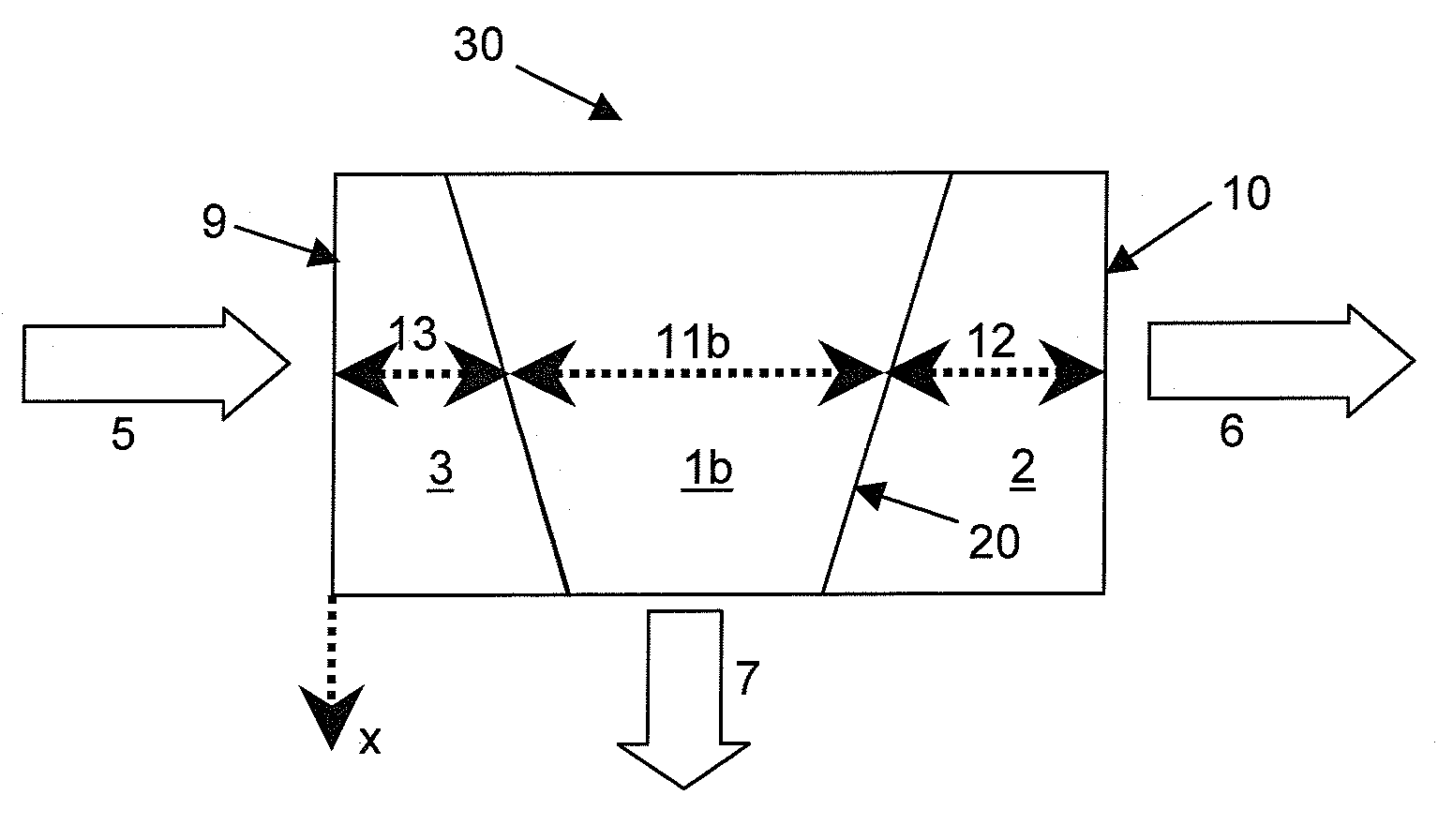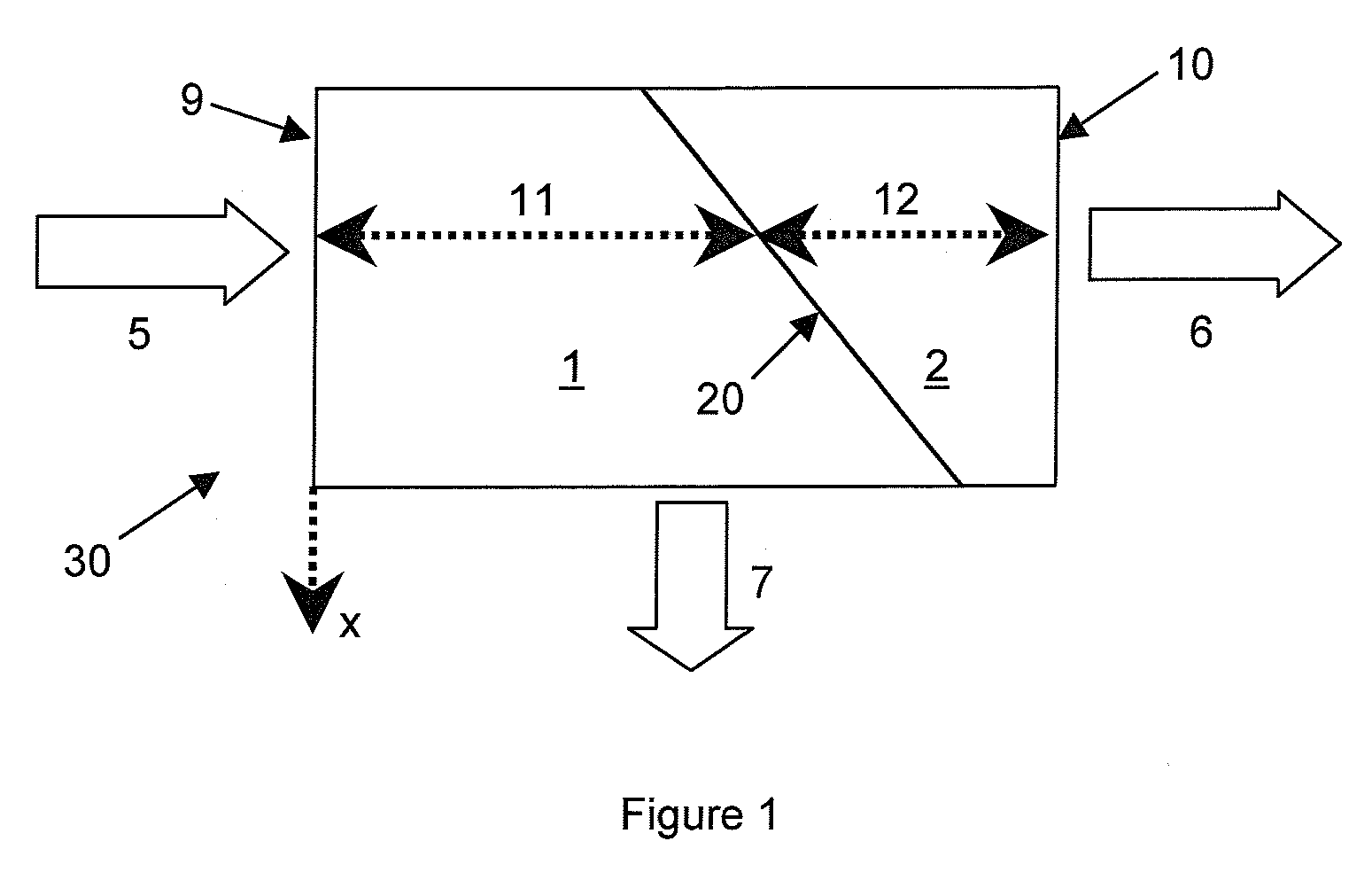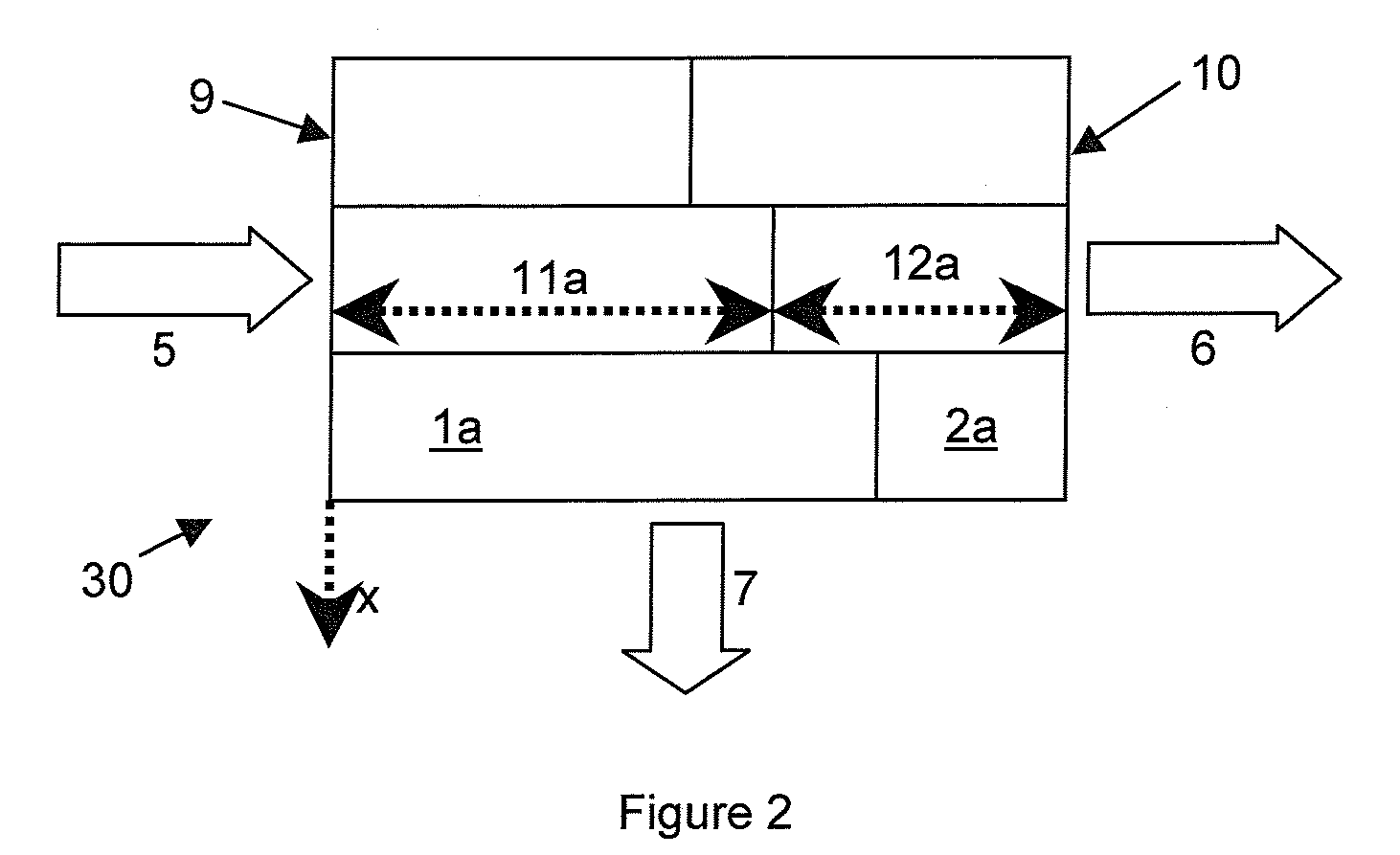Passively Q-Switched Microlaser With Controllable Peak Power Density
a microlaser and peak power density technology, applied in laser details, laser optical devices, semiconductor lasers, etc., can solve the problems of low efficiency, low efficiency, and inability to disclose a means of change, and achieve the effect of varying the laser output characteristics in a simple and inexpensive way
- Summary
- Abstract
- Description
- Claims
- Application Information
AI Technical Summary
Benefits of technology
Problems solved by technology
Method used
Image
Examples
Embodiment Construction
[0065] The present invention provides for an easy way to control the pulse energy, pulse duration or peak power density of passively Q-switched microlasers by designing the geometry of the laser cavity (e.g. wedged-shaped materials) so that the optical path in the active medium and / or the saturable absorber can be varied by simple displacement of the microlaser. Such structures can be produced using standard techniques: diffusion bonding (or optical contacting) of wedged plates, or liquid phase epitaxy of one material on a wedged substrate of the other material. In addition, combining such a microlaser with variable-focus optics allows the peak power density of the output laser beam to be controlled.
[0066] Such a laser system can be used for direct application, or seed a subsequent amplifier or harmonic generation stages.
[0067] A first exemplary embodiment is described in FIG. 1, in which a microchip 30 comprises a wedge-shaped gain medium 1, and a wedge-shaped saturable absorber ...
PUM
 Login to View More
Login to View More Abstract
Description
Claims
Application Information
 Login to View More
Login to View More - R&D
- Intellectual Property
- Life Sciences
- Materials
- Tech Scout
- Unparalleled Data Quality
- Higher Quality Content
- 60% Fewer Hallucinations
Browse by: Latest US Patents, China's latest patents, Technical Efficacy Thesaurus, Application Domain, Technology Topic, Popular Technical Reports.
© 2025 PatSnap. All rights reserved.Legal|Privacy policy|Modern Slavery Act Transparency Statement|Sitemap|About US| Contact US: help@patsnap.com



